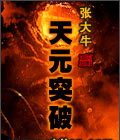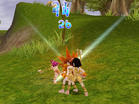股票期货突破技术分析(英文原版)-第23部分
按键盘上方向键 ← 或 → 可快速上下翻页,按键盘上的 Enter 键可回到本书目录页,按键盘上方向键 ↑ 可回到本页顶部!
————未阅读完?加入书签已便下次继续阅读!
pect the same rundown that the United States。had experienced between 1929 and 1932。 The American market had run up 95 points。in ninety…five days。to top out on September 3; 1929; then it ran down for a period of 1;039 days。to July 8; 1932。 According to what I had learned from Gann's。book; when the Japanese market topped on December 27; 1989; it seemed to make sense that the Japanese market would not bottom out until sometime around October 31; 1992。
I did not trade either side of my call on the Nikkei 225 Stock。Average。 But I overlaid the 1929 weekly chart of the Dow Jones。Industrial Average with the 1989 chart of the Nikkei; shown in Figure 6。6。 In real time; the Nikkei ran down for 966 days。to bottom out on August 19; 1992; whereas。the Dow ran down for 1;039 days。in 1932。 The relevance of all this。bees。apparent when you look at the overlaid charts。
The Theory in Practice
Let's。take this。theory a little further and see what economic。advantages。we can derive from some of this。knowledge。 From 1998; under doctor’s。orders; I needed to ration my time and spend less。time working。 I had been publishing forecasts since 1988。 Often this。included drawing up road maps。for the stock。market。 Now that I had some time on my。hands; I decided to focus。on an aspect that had interested me—an analysis。of cycles。in the history of the twentieth century—using my own methods。and in my own time。 The results are astounding。
I participated in a worldwide traders。teleconference on September 7; 2002; which involved approximately 500 traders。 I spent about an hour and a half answering questions。 Early in the conference; I was。asked by one trader where I believed the next pressure point would be on the road map。 The first pressure point I mentioned was。July 28; 2004。 I also said there was。a pressure point somewhere around August 2…5; 2004。 I based this。on historical war dates。and the fact that 2001 was。an election year in the United States。
In November 2002 and again in 2003; I was。guest speaker at the annual traders' conference run in Sydney by Hubb Limited; a trading software developer who was。granted a license to sell my courses。after I retired in 2001。 At these seminars; I mentioned the date of May 17; 2004; as。a major pressure point on the stock。market and referred to this。and the previous。pressure points。I'd mentioned as。“war dates”。 This。took place years。after I had pleted my final Safety in the Market trading seminar; and the dates。were based on the research I wasnducting on the history of the twentieth century。
The first week。of August has。often been a critical day in world history—and so it has been a significant week。for the stock market。 On July 31; 1914; the London and New York stock。exchanges。closed to avoid panic。trading。 That was。almost the case again in 2001; when an immediate security clampdown occurred in New York。and Washington on August 2; 2004。 The buildings。affected were the New York。Stock。Exchange and Citigroup Center in New York。as。well as。the World Bank。and the International Monetary Fund in Washington。 Britain declared war on Germany on Tuesday; August 4; 1914。 The United States dropped the first atomic。bomb on Japan on August 6; 1945。 (It had been scheduled to be dropped on August 3。) On August 1; 1941; President Roosevelt stopped the export of oil and aviation fuel from the United States。to Japan。 Japan had the choice of either changing its。foreign policy or gaining access。to the East Indies。oil by force。 On August 2 and 5; 1964; two U。S。 destroyers。were attacked in the Gulf of Tonkin; and they in turn sank。two North Vietnamese patrol boats—leading the United States。into the Vietnam War。
To fully illustrate the scope of the pattern; I would need to trace early…August events。through the whole century and give you the time frames; but I think。I've made the point。 Here is。the main thrust: Britain entered World War I
**********************
Page 131
**********************
CHAPTER 7
Options…Based Technical。Indicators for Stock Trading
BERNIE SCHAEFFER
Equity options。have e a long way since they were first listed on exchanges。in 1973。 Beyond the explosive growth in the volume of options。trading during this。period; which speaks。for itself; options。have bee a risk…management tool as。well as。a tool for speculation for a broad spectrum of market players; from modestly capitalized individual investors。to hedge funds。
In basic。terms; the world of listed optionsnsists。of call options。and put options。 The buyer of an equity call option has。the right but not the obligation to buy shares。of a pany; referred to as。the underlying stork; at a specified price (called the strike price) for a specific。period of time; at the end of which the option “expires”。 The call option buyers。are bullish—they're hoping to profit from a rise in the stock。price over the life of the option。
Why Options?
Why would a bullish investor choose to pay for a call option with a limited life instead of buying the underlying stock? The short answer is。leverage—the ability to participate in the upside movement in the underlying stock。for a relatively small initial investment。 The price of a call option is。most dependent on the price of the underlying stock。relative to the strike price; the stock's。volatility; and the amount of time remaining until the option expires。 But in all cases; the call option price will be a fraction of the stock。price; and in many cases; this fraction will be very small indeed。
To illustrate; lets。assume Stock A; which does。not pay a dividend; is。currently trading for 50 and an investor is。expecting the stock。to move to 60 during the next three months。 If the annualized volatility of the stock is。25 percent—typical of many of the blue chips—a three…month call option with a strike price of 50 will trade for about 5 percent of the share price; or 2。50 in this。case。 If the stock。should in fact reach 60 by the time this。call option expires。in three months; the 50…strike call option will have a value of 10 in the listed options。market。
So; in this。case; the call option will have quadrupled from 2。50 to 10 on a move by。the underlying from 50 to 60; and thus。a gain of 300 percent could have been realized by the option buyer on just a 20 percent gain in the stock。 And the leverage in this。case would have been 15 to 1 (300 percent/20 percent)。 Put another way; the option holder achieved a profit of 7。50 with an investment of just 2。50; whereas。the 10 gain realized by the stock。holder required a 50 investment。
Needless。to say; the scenario described above was。on the best…case end of the spectrum for the call option buyer。 Note; for example; that if the stock。does。not rise above 50 during the life of the option and the position is。held until expiration; the call buyer will lose 100 percent of his。investment。 And in the case of the on…the…money option—when the stock。price is。equal to the strike price—such total losses。can be expected to occur 50 percent of the time。
Based on this。quick。risk…reward profile; one can reasonably conclude that call option buyers。(those who are said to have long call…option positions) are rather aggressively bullish in the pursuit of leveraged profits—bullish enough to be risking a total loss。of their investment if they're wrong。
The buyer of an equity put option; however; has。the right but not the obligation to sell a stock。at a specified price (the strike price) for a specific。period (at the end of which the option expires)。 The put option buyer is。as。aggressively bearish as。the call option buyer is。aggressively bullish。
So in its。purest form; the options。world consists。of two constituencies: the aggressively。bullish call option buyer and the aggressively。bearish put option buyer。 In addition; the listed options。market provides。a treasure trove of information about the activity of call and put buyers。in each of the thousands。of underlying stocks。on which options。are traded。 Trading volume data are available for calls。and for puts; as。well as。option open interest; which represents。the number of option contracts。open at any time。
Gauging。Investor Sentiment
It should be no surprise; therefore; that technical and quantitative analysts。have made ongoing efforts。over the years。to measure the relative intensity of put and call activity as a gauge of the sentiment of aggressive investors。 Stocks。on which these investors。are very。bullish—as。indicated by greater call activity than put activity—could be deemed byntrarians to be vulnerable。 An excess。of bullish options。sentiment could be an indication of investor exuberance and overmitment; and the resulting dearth of sideline buying power could pave the way for a major pullback。 Similarly; stocks。on which investors。are very。bearish—as。indicated by greater put activity than call activity—could have significant upside potential。 An excess。of bearish options。sentiment could indicate investor pessimism and capitulation; and the resulting buildup of sideline buying power could pave the way。for a major rally。
Surprisingly; the focus on put and call option activity over the years。has。been pretty well restricted to:
1。
Aggregate options。data across。all equities。rather than an equity…by…equity。analysis。 A seriesmonly quoted by analysts。is。the “CBOE Equity Put/Call ratio” which represents。the trading volume of all puts and calls listed on the Chicago Board Options Exchange。 This。aggregation of equity options data may have made sense decades。ago; when few individual equities。had robust markets。in their options。 But these days。there are many equities。with options。that trade thousands。of contracts。each day and with option open interest equivalent to millions。of shares。of stock。
2。
Option volume; as opposed to open interest。 Option open interest is。a much more stable series。than option volume。 Option volume can vary very significantly from day to day; whereas。open interest adjusts。incrementally each day based on the number of positions that were opened or closed the day before。 In addition; option volume can be subject to all manner of intraday 〃noise〃; including the activities。of day traders who hold no position at the end of the day。
Schaeffer's Open。Interest Ratio
Schaeffer's。Investment Research has。attacked





